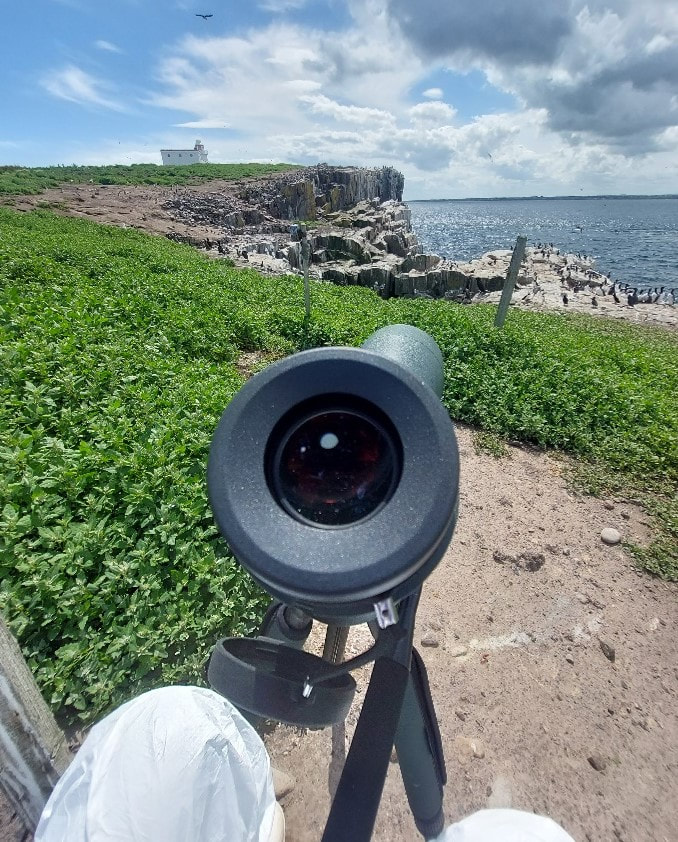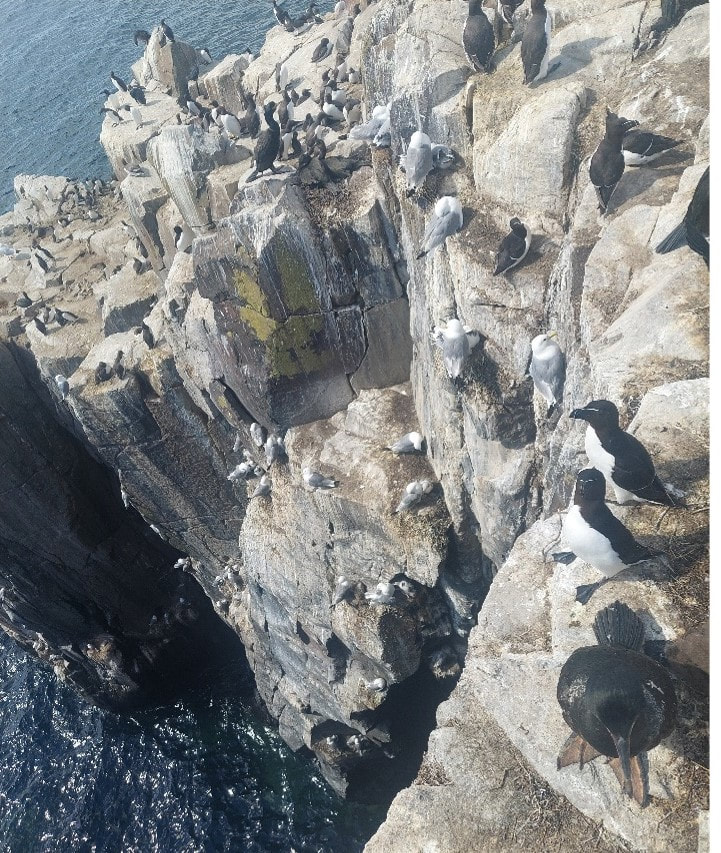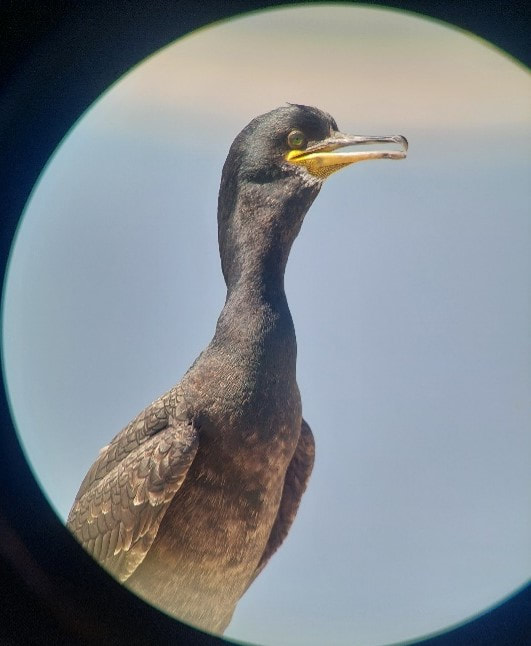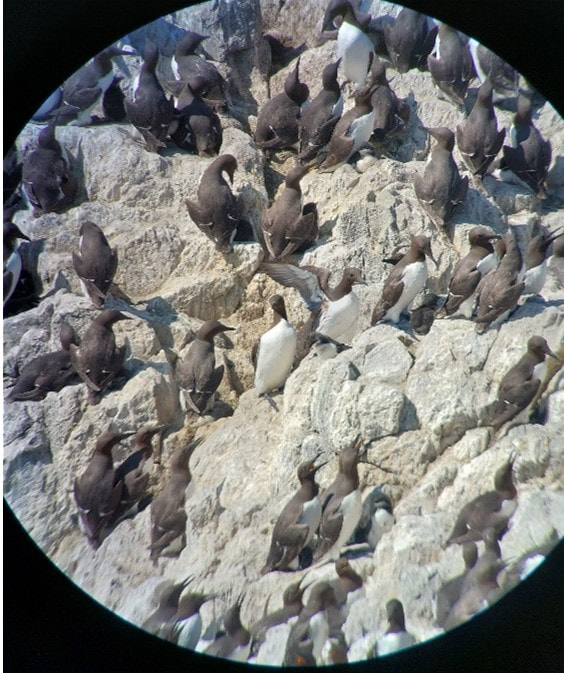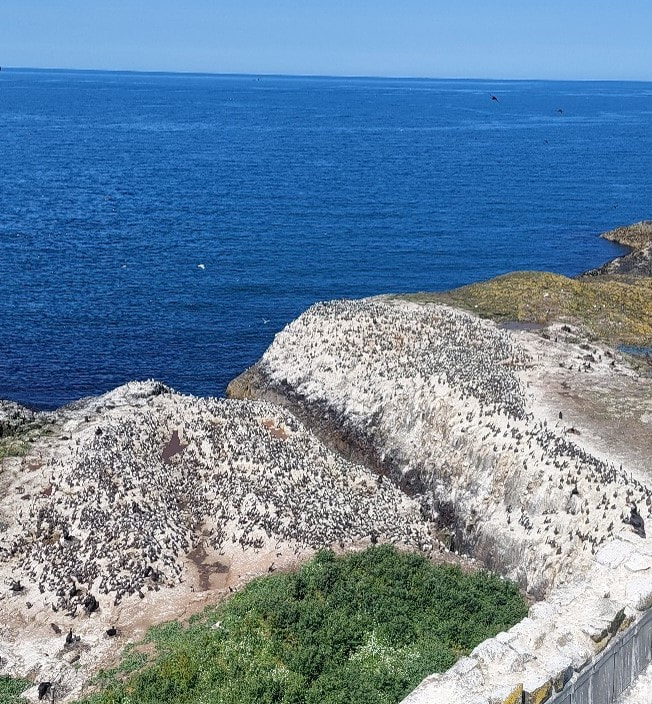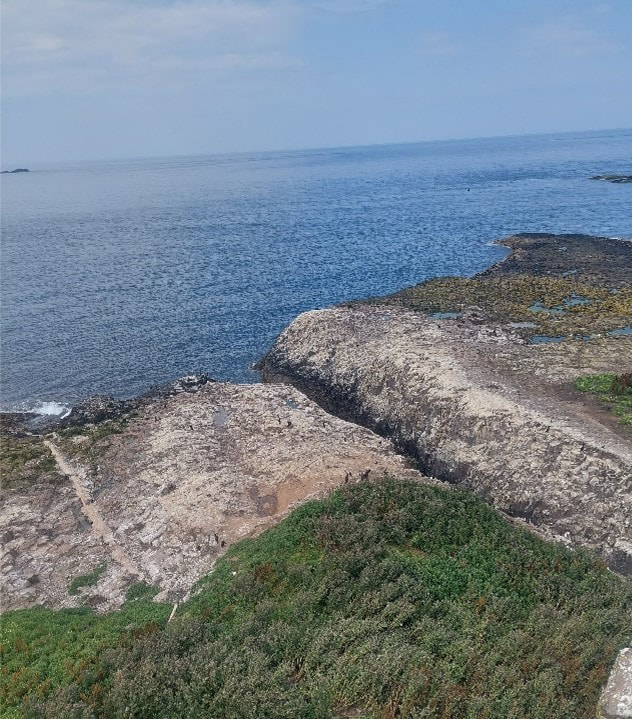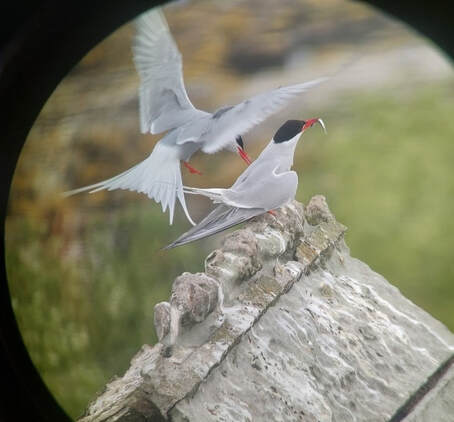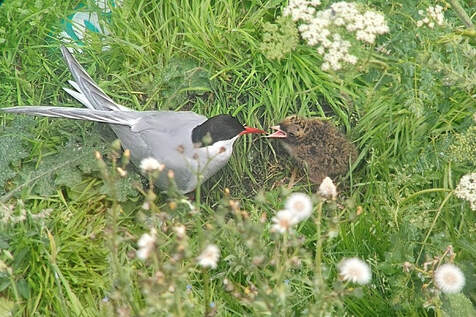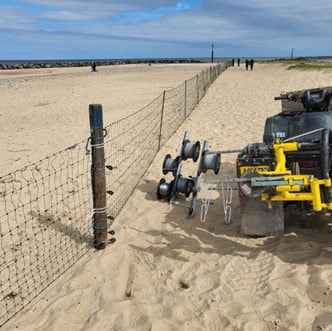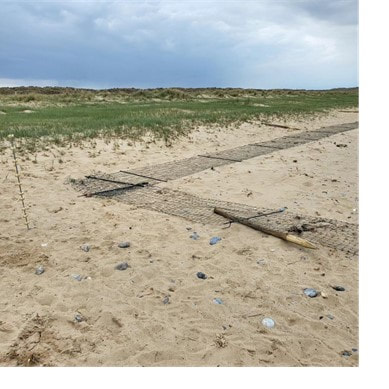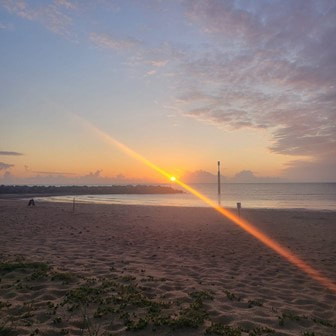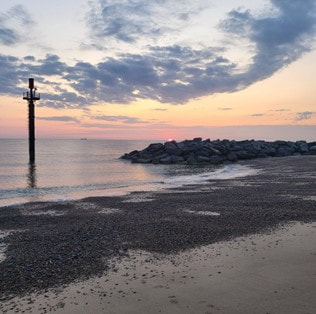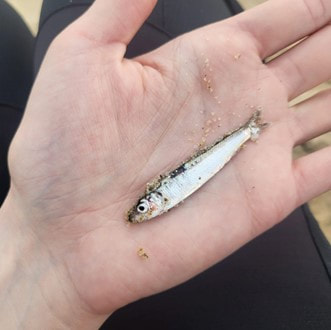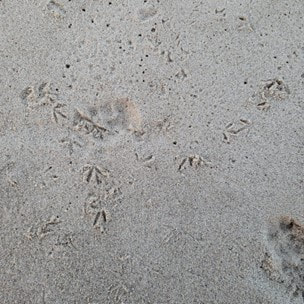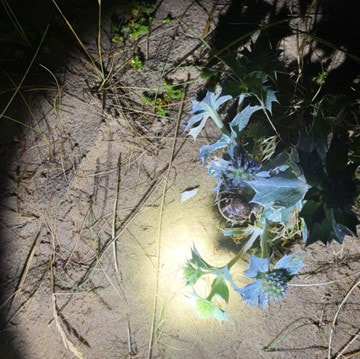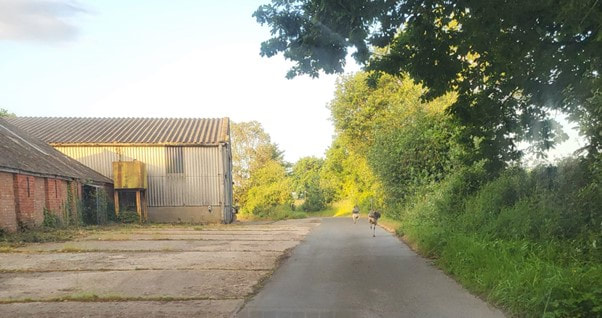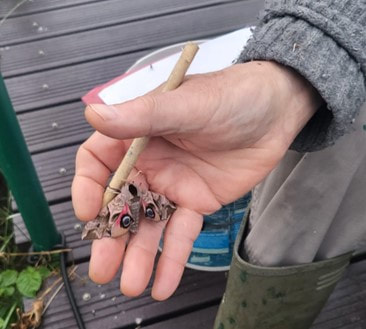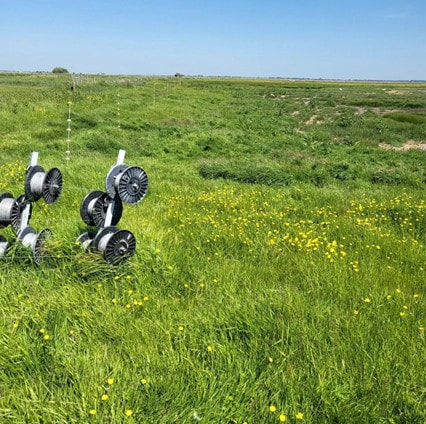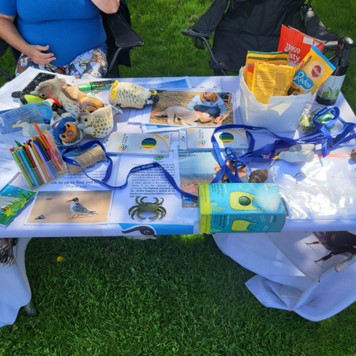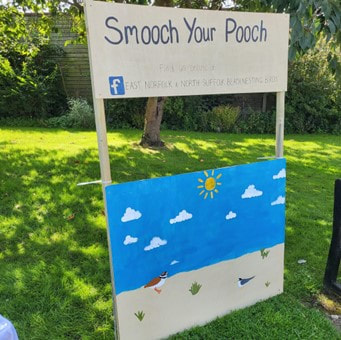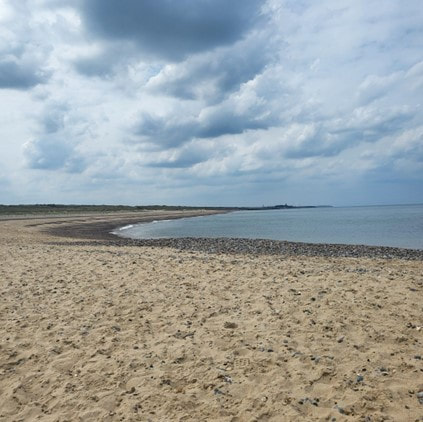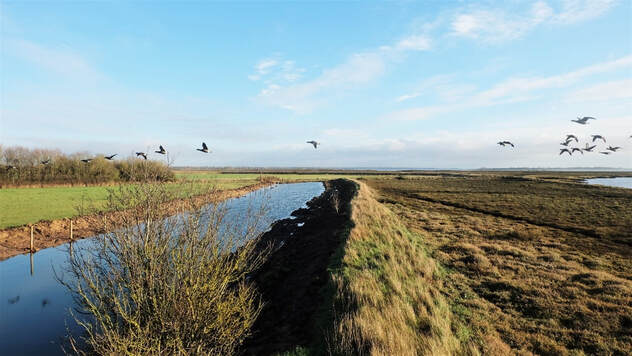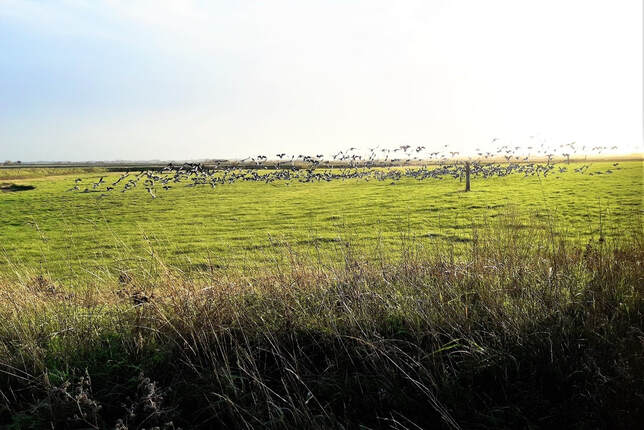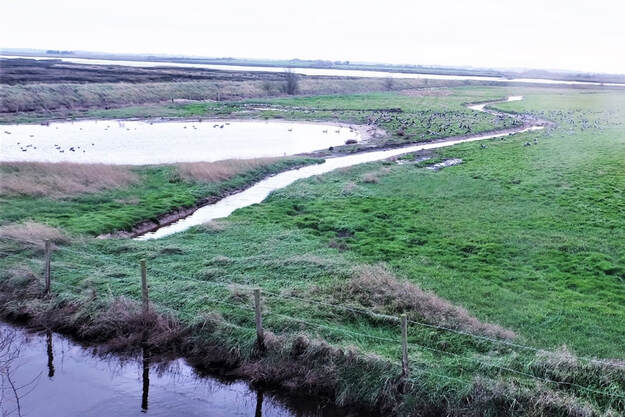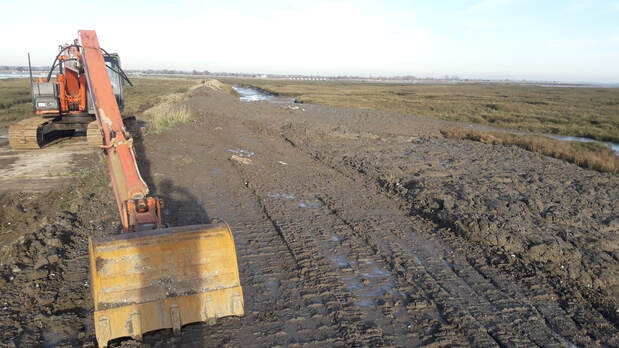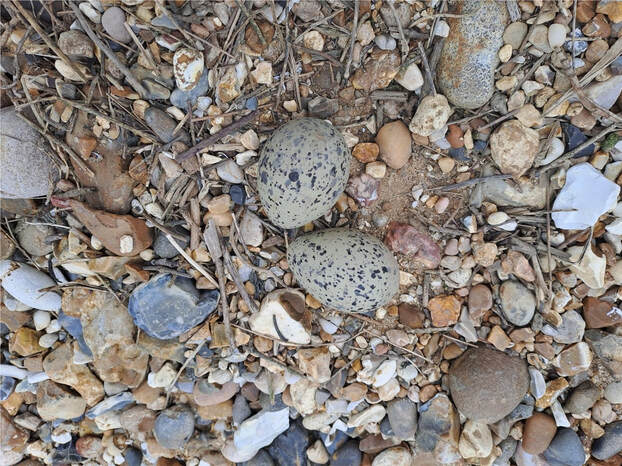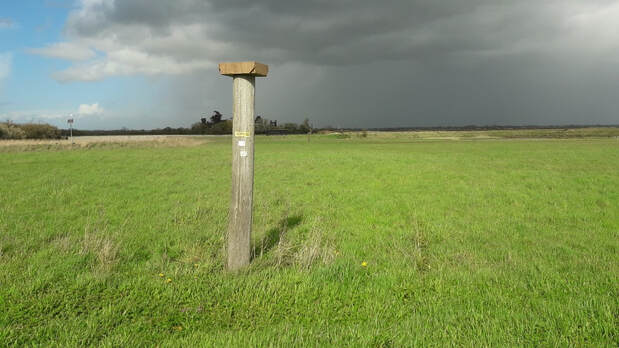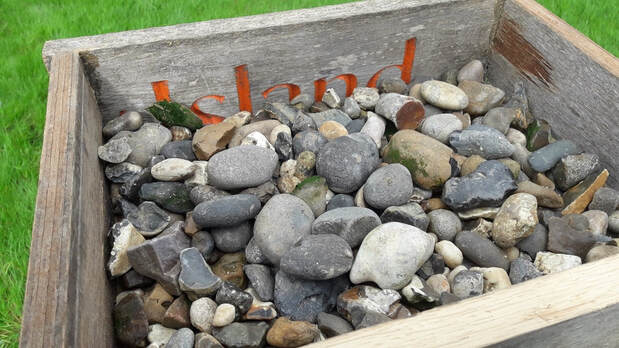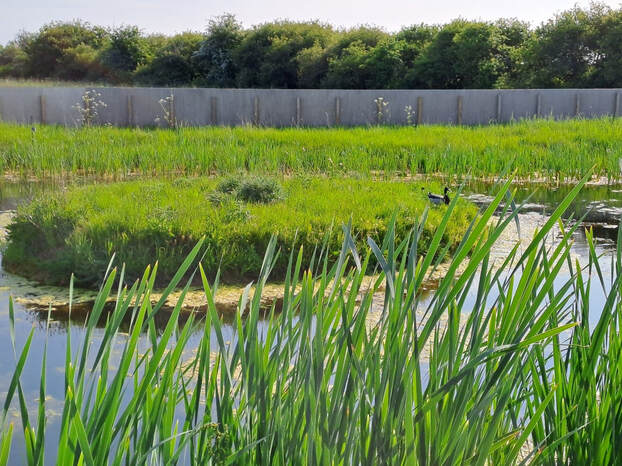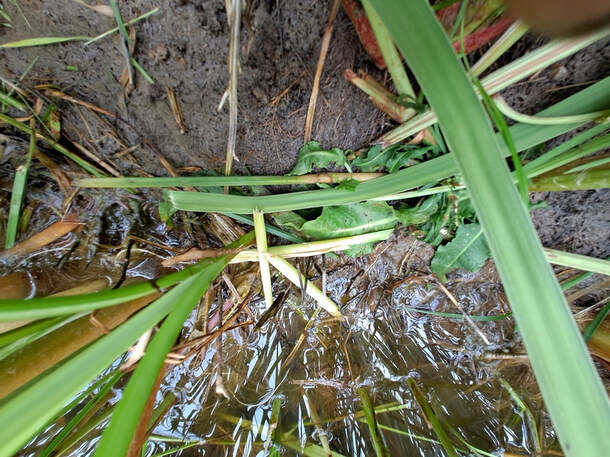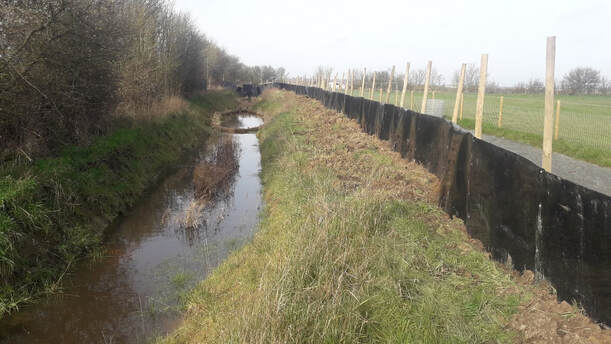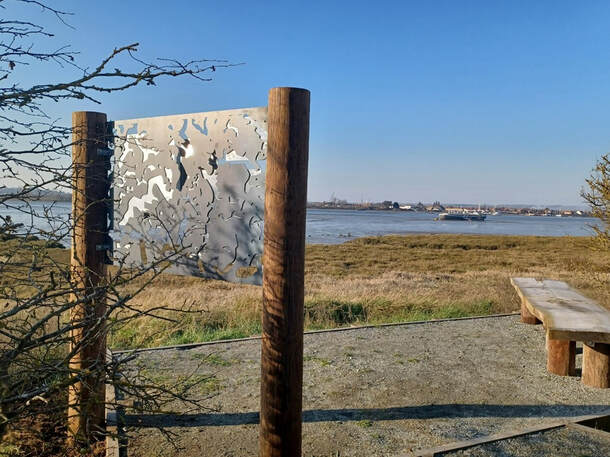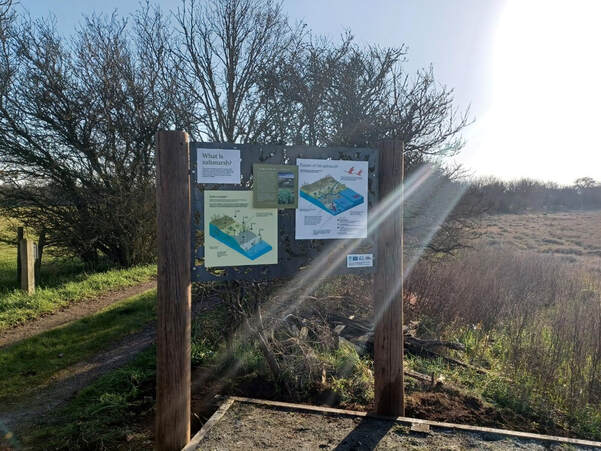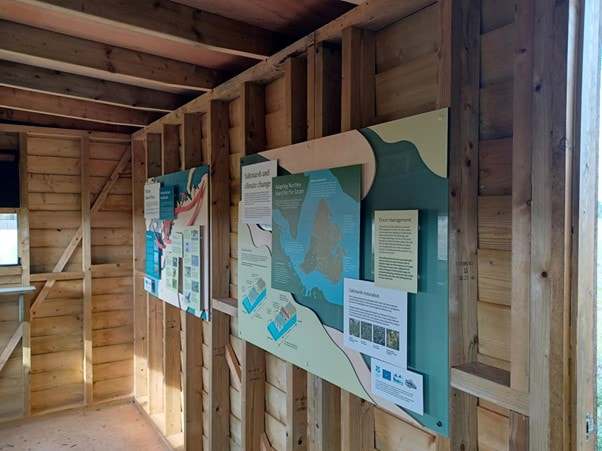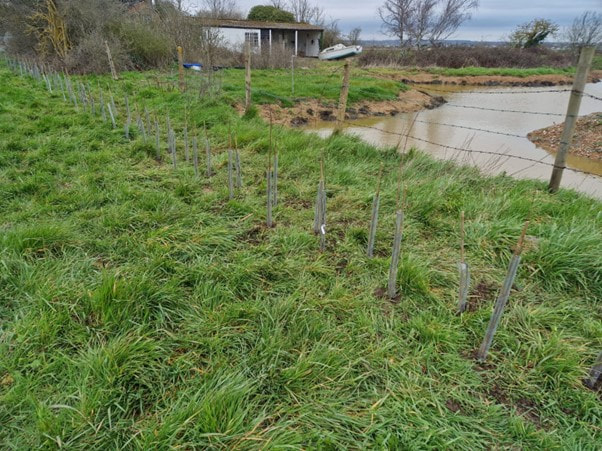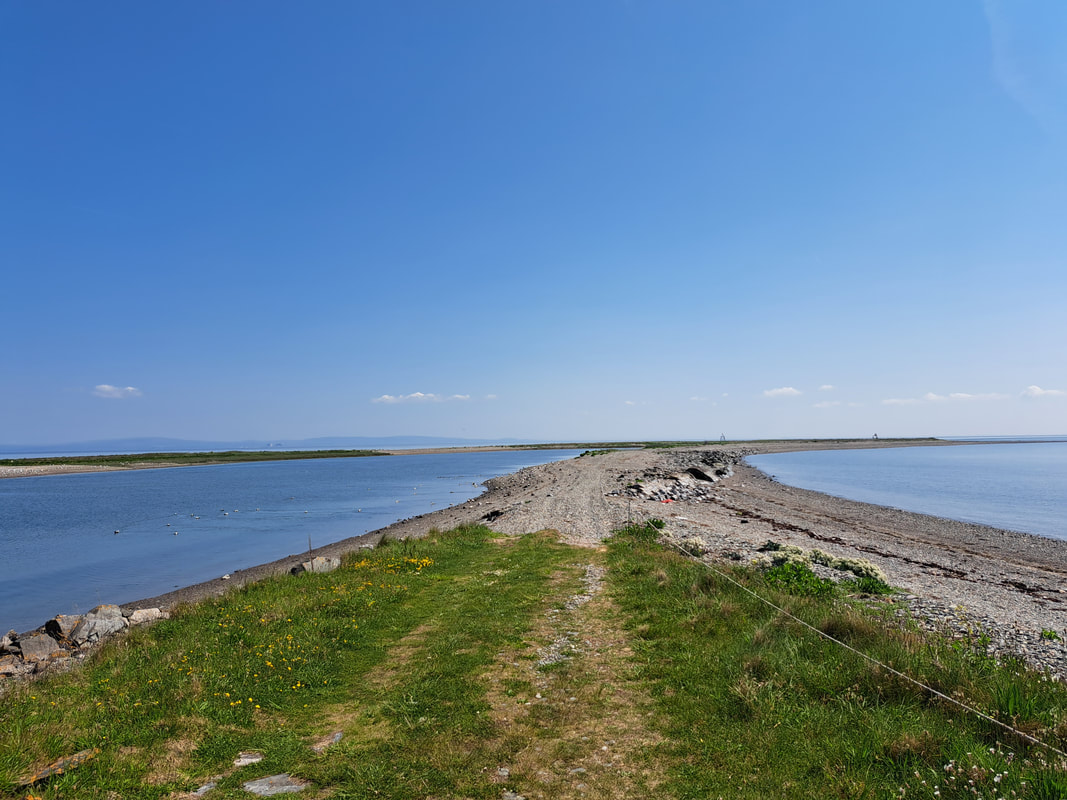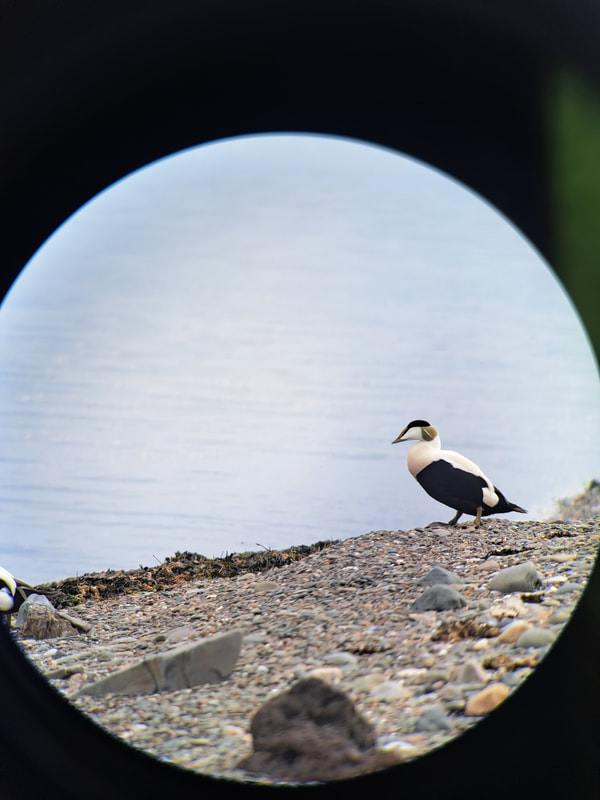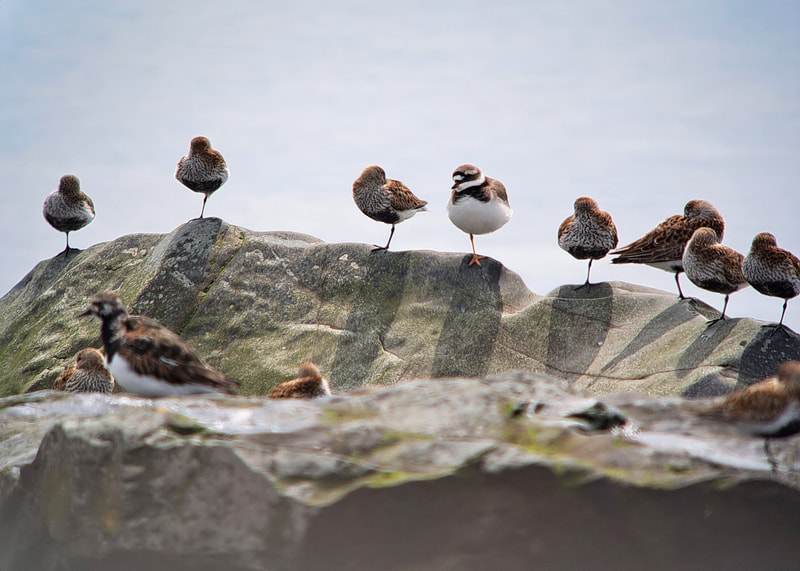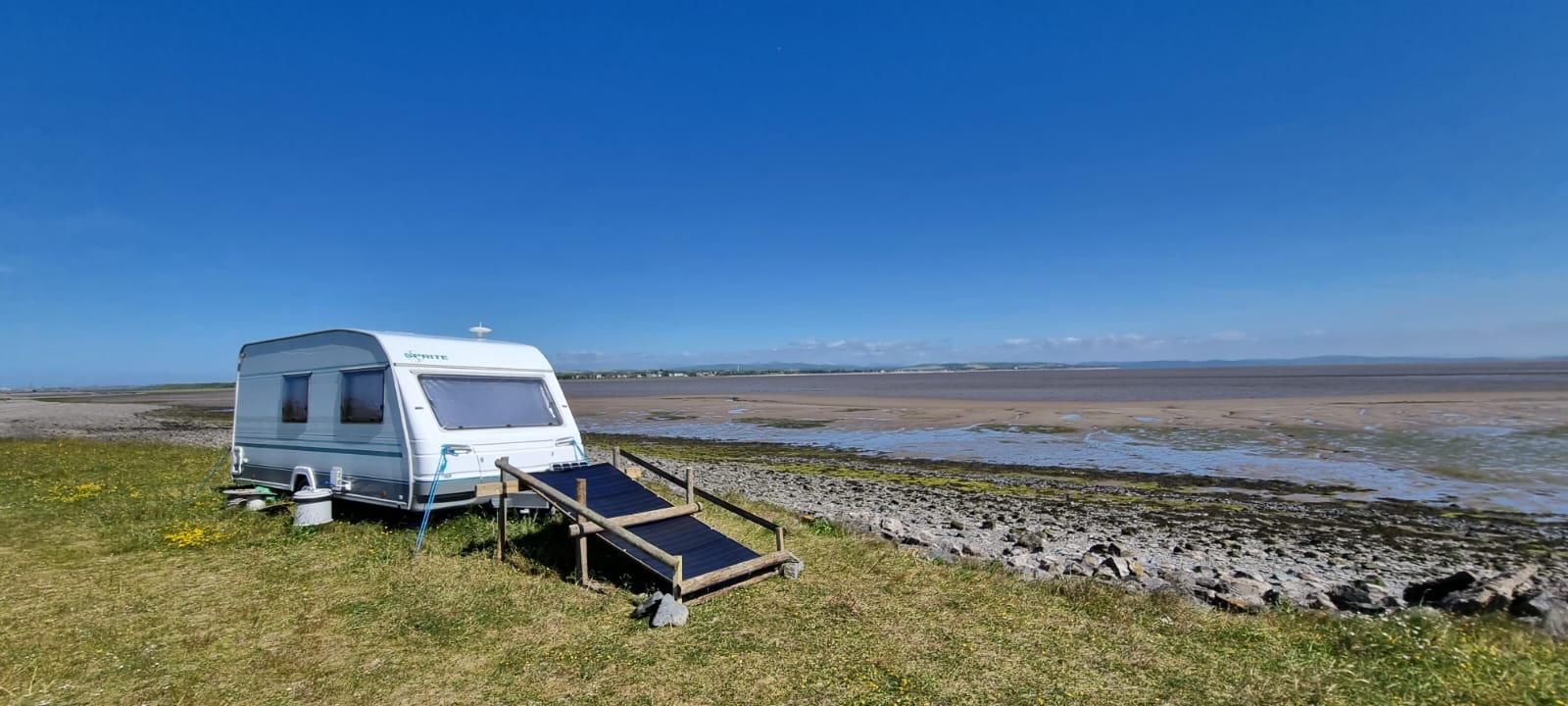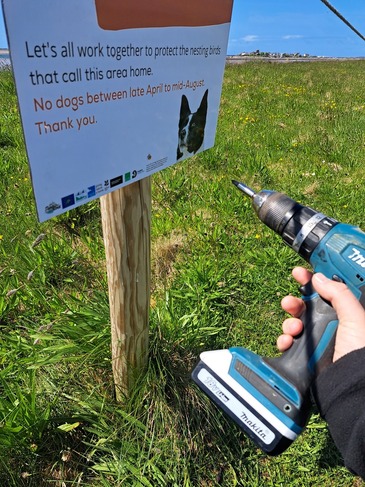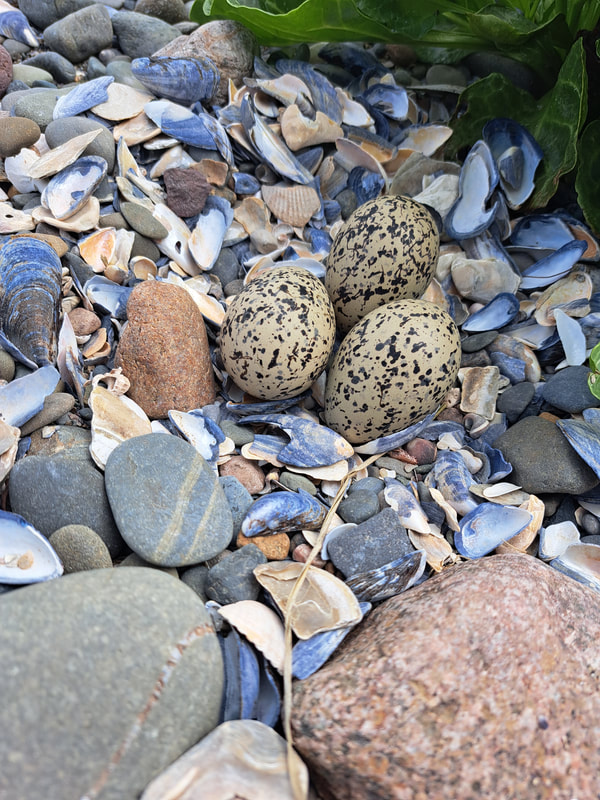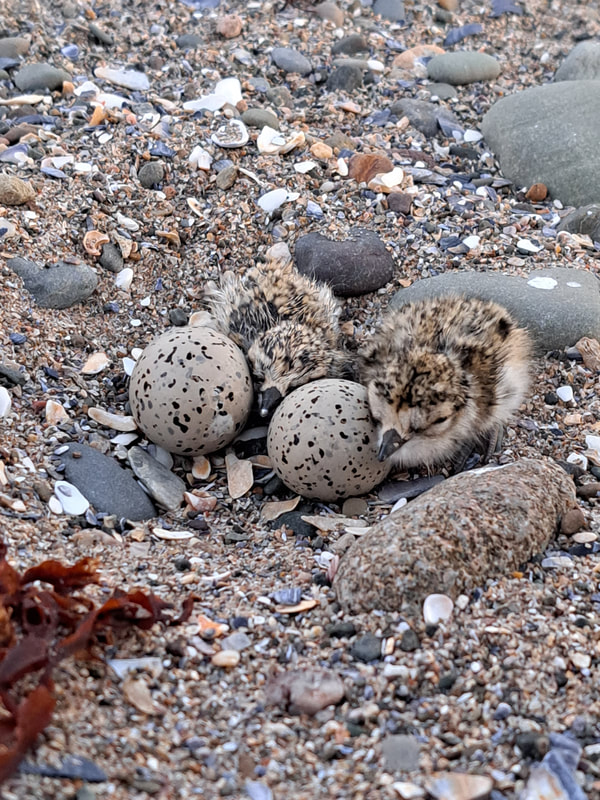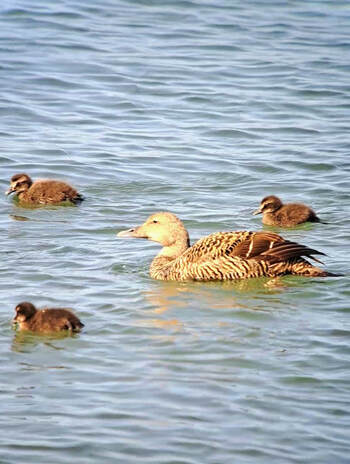|
Blog by Marie Dipple, RSPB Beach Nesting Bird Coordinator The journey begins…! I am thrilled to introduce myself as the new Beach Nesting Bird Coordinator, working on the Life on The Edge (LOTE) project, taking over from the brilliant Lizzie Bruce. With 8 years in the conservation sector, and experience as a little tern warden at Chesil Beach in Dorset and Gronant Dunes in North Wales, I am eager to apply the knowledge I've gained in my career so far to this new role. Having worked on coastal restoration projects, building partnerships, and contributing to nature recovery strategies, I've learned invaluable lessons from my colleagues and fellow enthusiasts. Following in Lizzie's footsteps, I am determined to continue the great work already achieved and continue building relationships with existing partners and exploring new opportunities. The LOTE project wraps up this year, and I'm excited to be part of the culmination of efforts from our team as well as the dedicated project partners. Although in saying this, I realise I don’t want to be seen taking credit too soon, as I’ve conveniently come in as the reports are being written… In my first two weeks, I've already seen the immense dedication of reserves staff, volunteers, managers, and stakeholders towards beach nesting bird recovery in England. Collaborating closely with my LOTE colleagues, I've enjoyed diving into breeding data, case studies, and reports on species like terns, gulls, ringed plover, oystercatcher, and redshank. These birds depend on effective coastal and marine habitat management, and through adaptive management and sharing best practices, we can implement the most appropriate conservation measures. Watch this space for this work developing! There will be some exciting outputs to follow.
I hope this role promises to challenge me, inspire growth, and allows me to work with incredible people. So far, it has absolutely delivered on the latter! I love connecting with people and am keen to collaborate with new and existing partners and stakeholders to drive this work forward; to halt species decline and promote recovery. Here's to new beginnings, and the exciting path ahead! Photo Credits: Marie Dipple
0 Comments
Blog by Flora Burn, RSPB Research Assistant I was initially employed in 2023, as a HPAI research assistant and following the end of the breeding season; have since been working on the EU funded LIFE on the Edge project. After much perseverance, my goal of being employed in the conservation sector finally came to fruition. It can only be up from here! Donning full PPE in baking heat and pouring rain was made worth it to see some of the beautiful, special spots of the Northumbrian coastline. Home to thousands of seabirds. The Farne Islands was where I spent the majority of my visits through the week – also rotating around Lindisfarne and Long Nanny site. My first visit to the Farne Islands, I had few words. The beauty was extensive. I had never been so close to such a vast expanse of different seabirds, each drowning the other out with a cacophony of calls. Though it was sobering to see the avian flu wash through the colonies. As a research assistant, I monitored the birds daily; collecting and recording data, reminding myself that the data will help us to understand this deadly virus and inform future decisions for the protection of species. After many hours spent watching a variety of species, the sea of black and white (Kittiwakes, Guillemots, Razorbills, Shags) covering the rock faces gradually started to become patchy, with more and more heading off to their wintering grounds. I took my last boat ride back to land, after finally having (just about) found my sea legs, having watched thousands of young grow, fledge and leave. It was time to get back to work in a slightly less wild environment, but no less interesting. I was taken under the wing of a pre-existing team, and joined in on the EU funded project, LIFE on the Edge. My work helping with the creation of a toolkit guiding best practice of conservation projects managing beach nesting birds has taught me a lot. The aim is that it will aid the conservation of beach nesting birds across the UK. In helping to create a ‘toolkit’ it provides a central resource, a hub of information, for site staff, volunteers, members of the public and generally anyone of interest, to access. In essence, a go to guide / manual on how to protect beach nesters. Time was spent reading, researching and writing. Having worked as a Little tern warden previously, joining the project felt like a natural fit – having experienced the hard work and team effort it takes to protect these vulnerable species. I thought back to the days of trudging beaches for miles, lugging fencing, fishboxes, shovels, pleading with visitors to keep away from birds, doing everything possible to protect the little visitors whose numbers are so low, in efforts to protect them. I couldn’t help feeling like a manual would have been useful! I threw myself into the research and collation of information, determined to pull together an informative, accessible document. Some species I already had a good level of understanding of their needs, some I knew less about, such as the Mediterranean gull. Gulls seem to get a bad rep. They are an amber listed species, and with reduced suitable natural nesting sites, much like many other beach nesting species, numbers are dwindling. A few years ago, egg collectors decimated a mixed colony of Black-headed and Mediterranean gulls at Poole Harbour. 60-70% of nests were emptied by illegal collectors overnight, to be sold on and served in a few high-end luxury restaurants. This has a huge impact on breeding success. Disturbance, predation and climate change are all severely impacting seabirds, and we need to do what we can to put measures in place to offer the best chances of survival. Through my work, I have vastly expanded my knowledge of a variety of beach nesting bird species and their conservation practices. It’s encouraging to know that the work being produced will inform UK wide conservation in practice, with detailed sections providing information on species, monitoring methods, predator monitoring (trail cameras, fencing etc), predator management (chick shelters, audible deterrents, diversionary feeding etc), disturbance and management (signage, zoning, patrols etc), habitat management, and engagement with the community. We can only do our bit, and long may it continue. Editor's comment: Please note this toolkit is still being written, but will be placed on the LIFE on the Edge website once it is finalised. All photos are copyrighted: Flora Burn Instagram: @flora_burn Thanks to Rebekah Wall, RSPB Little Tern Volunteer, for this lovely guest blog. Conservation is something you’ll commonly find on the news but is such an important topic for the generation these days. To take part in it is something even more important and wonderful. Conservation is my career path and to have the option to become a volunteer is very rewarding and has been something I have done since graduating from University. I applied to be a bird warden for the RSPB in April (2023) for something new to volunteer for, to improve my mental health, and to be more involved in the current need to support conservation and breeding opportunities for the Little Terns. To be given the opportunity to work amongst RSPB staff and experienced volunteers and to be working closely with the Little Terns, a thrill of excitement made me ecstatic, and I was looking forward to starting my shifts. As well as actually working alongside the Little Terns, the fences needed to be put up at Winterton-on-sea and at Eccles. Many volunteers popped up to help and it was interesting to talk with the new and experienced volunteers about what to expect from a shift and how to engage with the public and their dogs. During the induction, one of the staff spoke about the night shifts, the golden hour that we could witness, and the experiences we could obtain. Instantly I knew I wanted to do as many night shifts as I could, fitting it around my day job. I began my first night shift at 10 p.m. in the middle of June, wrapped up warm with many layers, thermals, waterproofs, a woolly hat, gloves, flask filled with hot coffee and snacks. Sitting in a camping chair can be very comfy until it gets very cold. Fortunately, blankets were available to use and sudden spurts of bats and moths flew over one's head and gave me a buzz, excitedly looking for more wildlife in the sky. The night shifts were so different from the day shift. As said by previous volunteers, you get to witness the golden hour which was so magical to see. You have to watch the birds wake up from their hiatus as they are always on the watch, protecting their eggs, chicks, and colony. To witness them fly up, fluttering over the sea and quickly in dive to catch any amongst the Clupeidae sp. to give their chicks the first meal of the day. Listening to their calls is so distinct, made my heart flutter. And the first time I saw a chick, my heart burst into happiness, knowing for a fact this is the environment I want to be in. How small they are! Little balls of speckled fluff. During the night shifts, you literally have to be the watchful eye, a protector to help the success of the breeding Little Terns. To physically chase away the predators with a shaker (a bottle with small stones and pebbles in it). Whether they are flying raptors and four-legged mammals - muntjacs for the eggs, foxes for the eggs and chicks, a few domestic cats now and again, and the occasional squirrel. Finishing a night shift every morning is very different from the last. One morning, driving on my way home from a night shift I happened to come across a situation quite bizarre. Two Rheas were running on a country road right in front of me in the car. Completely bewildered I thought I may have been over-tired. I managed to snap some shots and pass them on to the Little Tern group. A few hours later, I was informed that they were from a farm and had escaped, I saw two of the twelve that were roaming around Norfolk. As well as strange occurrences, I was able to witness a couple of moth traps being unveiled! The beauty of the elephant hawk moths to the peppered moths was amazing and enticing to watch. Working as a bird warden is so much more than looking after the birds, you are able to gain transferable skills, work as a team, get the chance to take part in other events such as witnessing kestrel chicks being ringed, working on RSPB sites such as Berney Marshes engulfed in magical greenery and wildlife, many bird species and mammals and public days such as ‘’Smooch your Pooch’’ promoting dogs on leads during the breeding season of the Little Terns. Being given the chance to take part in volunteering alongside the RSPB for the past five months has been an amazing opportunity that I have thoroughly enjoyed and look forward to the next season.
Blog by David Mason, National Trust - Suffolk and Essex Coast Ranger ‘Working with the grain of nature yields the best chance of maintaining a healthy and beautiful coast for the future, a coast that is great for people and for wildlife.’ – Northey Island Coastal Adaptation Strategy Project Vision The UK government has recognised the importance of the East Atlantic Flyway, a migratory bird route over western parts of Europe including Yorkshire, Lincolnshire, Norfolk, Suffolk, Essex and Kent. In recognition of its vital importance to bird populations and wildlife it has joined the list of seven sites put forward to join the list of World Heritage sites. The area sees huge transient bird populations pass through every year as the seasons change, and the River Blackwater in Essex, including Northey Island, is one of its hotspots. More space created for birds. The overhead powerlines across the island were removed last year and replaced with underground cables. Once the flightline was clear the brent geese that winter here, along with lapwing, curlew and godwit, began using the eastern and southern field, areas of the Island they had previously avoided. The highest number of geese since 2015 (1710) was recorded on the WeBS count, along with the highest count ever of dunlin (3875) roosting at high tide. Following the managed realignment, this area in the eastern field is designed to be underwater at high tide. It will retain water when the tide goes out and will develop as a saline lagoon. The geese enjoyed the shelter of the sea wall over the winter and used all the grassland on the island. North West Wall beneficial use of dredged sediments (BUDS) Further sediment dredged from Maldon harbour has been placed to enhance the saltmarsh in this area as part of an ongoing project. Oystercatchers nested just beyond the placed mud on a patch of gravel. We are hoping other birds may use the new nest boxes placed on top of the cut down power poles left in the eastern field. Water vole update Pond marginal vegetation is well established in the main new pond and is providing food and shelter for the translocated voles. A pair of mallard also nested in the vole enclosure and hatched 10 ducklings. Signs of water voles burrowing in the pond banks and feeding have been found with the characteristic diagonal cut on the small piles of vegetation. Later in the year they will pull these into their burrows as a winter food source. A new extension fence has been installed along a connecting ditch to allow population expansion and accommodate any further voles found during the continuing works. The fencing installed to contain the voles will be removed when the works are finished, and they will have access to all the freshwater bodies on the island. Telling the story of Saltmarsh, Migration and Managed Realignment New interpretation boards have been installed in the hide and on a viewing platform, with a a new bench overlooking the River Blackwater towards Maldon and Heybridge. The three boards illustrate different aspects of the island’s environment. The first board explains the importance of saltmarsh for biodiversity, flood protection and carbon storage and the second highlights the East Atlantic Flyway used by migratory birds. The third board illustrates the work of the LOTE project to realign some of the sea walls to create 10 hectares of new saltmarsh and protect 50-60 hectares of saltmarsh for the next 100 years, predicted to have been lost to the effects of climate change without action. Another new hedge and pond created 276 hedge plants were planted in total and included hawthorn, hazel, wild honeysuckle, spindle, field maple, buckthorn, hornbeam, cherry plum and blackthorn. These species were selected to provide a good variety of fruit, blossom and year-round interest, so will hopefully increase the food sources available for birds and insects on the island. These have been weeded and mulched by the Essex and Suffolk Volunteer Group along with removing old barbed-wire and litter from the saltmarsh. Three new ponds have been created, linked by a connecting ditch, in the north east corner of the island. They have attracted yellow wagtail and mallard. Links to previous blogs about Northey Island
Part 1: www.projectlote.life/news/northey-island Part 2: www.projectlote.life/news/ntconservationadaption Part 3: https://www.projectlote.life/news/ntwatervoles Blog by Rebekah Watts, Cumbria Wildlife Trust Foulney Island Warden Why is Foulney important? Foulney Island Nature Reserve is comprised of a shingle spit within Morecambe Bay SPA connected (via manmade causeway) to the mainland. The reserve is home to several wintering bird species such as knot, dunlin and wigeon and is an important breeding location in the spring and summer for shorebirds such little terns, Arctic terns, ringed plovers and oyster catchers as well as other bird species such as pied wagtails, meadow pipits, eiders and skylarks. The terns that choose Foulney as their nesting grounds are protected species and they are in decline. It is so important to offer them a safe place to lay their eggs and raise their chicks as they are easily disturbed by human recreational activities, dogs, aerial and ground predators (such as sparrowhawks and foxes). Their nests are vulnerable as they nest where there are no visual obstructions to allow them to watch for predators but this means that they nest out in the open, making their chicks and eggs susceptible to predation. Their eggs are at risk of being trampled by people, as their camouflage is very successful. Terns nest on shingle and require close access to the sea to feed. That’s what makes Foulney the perfect place for them. Terns return to the same colony to breed in most cases and Arctic tern travel 22,000 miles on their migration. This special little island hosts these incredible birds and it needs to be protected. Breeding Season Preparation Preparation for breeding season on Foulney Island is an intense operation! For this year, the main island was turf stripped to provide extra habitat for shore nesting birds. This new shingle area was fenced off to protect the birds using it to raise their young, from ground predators such as foxes, rats and hedgehogs. Turf stripping involves the removal of the top layer of vegetation and in this case, changing the habitat to shingle. The vegetation was then buried beneath the layer of shingle. This area has been used this season by eiders, ringed plovers and oyster catchers who’s chicks began hatching recently, proving the success of the change in habitat! Skylarks and meadow pipits also benefited from the ground predator protection in this area as they too nested here, inside the fence on the edge of the shingle where vegetation remains. In preparation for the electric fence the vegetation was strimmed. Insulator stakes were knocked into the ground and electric wires passed through the insulators. To prepare the public, signs were put up in the carpark, the causeway and on the island stating that dogs are not allowed and explaining why, and the rope fence to fence off the beach area, where the birds nest, was put up. Lastly, the caravan was put in place. Then it was time to begin surveying! Warden life on Foulney Hi! I’m Bekka, and I’m this year’s seasonal warden on Foulney island nature reserve. This beautiful little island reserve is home to many species of breeding birds over the summer including oystercatchers, ringed plovers, eider ducks and little terns. In addition to the birds, the island is home to and visited by mammals such as grey seals and voles; as well as insects such as butterflies and moths. Sharing an island with such beautiful wildlife is an amazing experience. Being the only person living on an island might seem lonely, but I have plenty of fishermen to chat to, and of course the wildlife! During the season I have been lucky enough to experience finding nests and watching parents lovingly incubate their eggs, and have watched eggs hatch into beautiful chicks. Watching eider females with crèches of up to 30 ducklings swimming across the water and oyster catcher parents leading their chicks across the shingle are sights that will never get old. As the warden, I spend my time monitoring eggs, chicks and adults, checking trail cameras and engaging with and educating the public. Explaining to the pubic the importance of reducing disturbance to nesting birds is an extremely vital part of my job. The natural threat response in nesting shorebirds is triggered by the public and their recreational activities, especially when dogs are involved. When threatened, shorebirds are forced to flee, leaving eggs and chicks vulnerable to predation, and forcing the adult bird to expend energy which should be used in incubation or finding food. In the worst case, an out of control dog can kill shorebirds, which unfortunately occurred on Foulney this season. It is so important that our shorebirds are protected. We all have our part to play! Now that chicks are hatching we are well into the season. Fingers crossed that all goes well here on Foulney island! |
Archives
April 2024
Categories
All
Photo credits: Oystercatcher by Katie Nethercoat (rspb-images.com)
LOTE Logo credits: Saskia Wischnewski |




